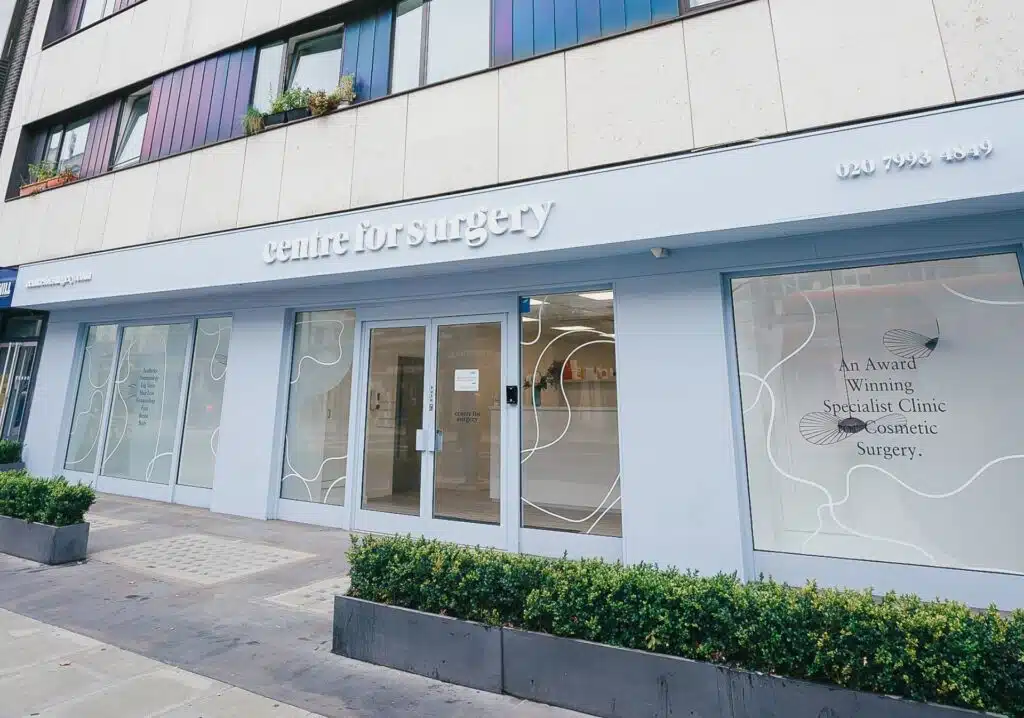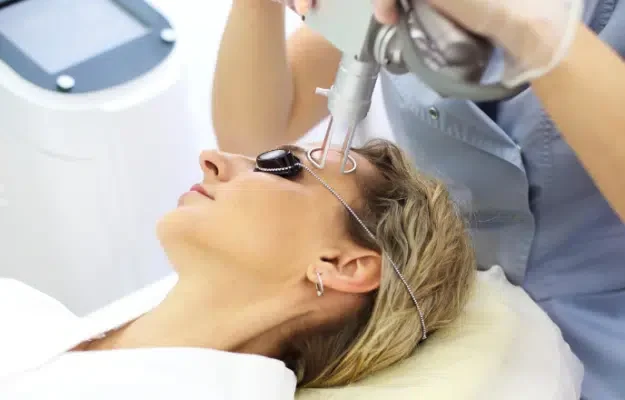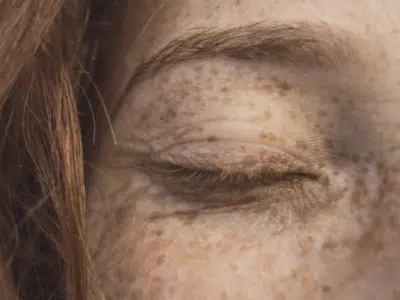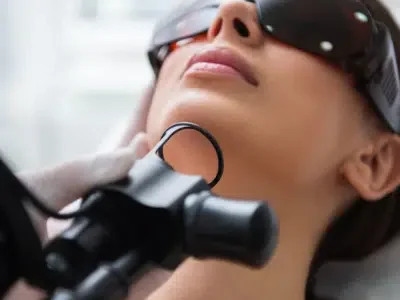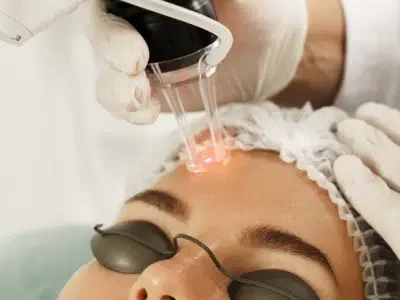
Factors Influencing Rosacea Laser Treatment Costs at Centre for Surgery
Understanding the cost of laser treatment for rosacea involves considering several key factors that directly impact the treatment plan and its pricing. These factors ensure that each patient receives a customised approach, tailored to their specific condition and needs.
-
Areas Treated:
- Half-Face vs Full-Face Treatment: We offer both full-face and half-face laser treatments. The choice between these options depends on the extent of rosacea symptoms. Many patients experience rosacea symptoms localised to just one-half of the face. Opting for a half-face treatment, in this case, reduces the cost compared to a full-face treatment, as the sessions are shorter and target a smaller area.
-
Severity of Your Rosacea:
- Impact on Treatment Plan: The severity of rosacea symptoms varies from person to person. Symptoms typically include redness, pustules, acne-like spots, and visible blood vessels (telangiectasia) around the nose and cheeks. More pronounced symptoms often necessitate a greater number of laser treatment sessions to achieve desired results. Consequently, patients with more severe rosacea may find that their treatment plan is more extensive and, therefore, more costly.
-
Number of Sessions:
- Treatment Regimen and Pricing: To attain optimal results, our specialists typically recommend a course of three laser treatment sessions, spaced 4-6 weeks apart. Recognising the need for a comprehensive treatment plan, we provide a cost-effective options for patients who book these three sessions in advance. This approach not only offers a financial benefit but also ensures a consistent and effective treatment strategy.
-
Future Maintenance Sessions:
- Long-Term Considerations: It’s important to note that rosacea treatment, while effective, is not a permanent solution. Symptoms may reappear over time, necessitating future maintenance sessions. These ongoing treatments are an additional factor to consider when evaluating the long-term cost of managing rosacea.
Effectiveness of Laser Treatment Across All Stages of Rosacea
The versatility of laser treatment in managing rosacea is a significant aspect of its appeal. Rosacea, a condition that can present itself in various stages, requires a flexible and effective approach for treatment. At Centre for Surgery, we utilise the Fotona Nd:YAG laser system, renowned for its ability to treat all stages of rosacea, ranging from the earliest signs to the most severe manifestations. This adaptability is key to the system’s success in providing relief and improvement to patients with varying degrees of rosacea.
-
Pre-Rosacea Stage:
- In this initial phase, patients often experience intermittent facial redness or flushing. Laser treatment at this stage can be highly effective in managing these early symptoms, potentially slowing or preventing progression to more advanced stages.
-
Mild Rosacea Stage:
- As the condition progresses to mild rosacea, symptoms like persistent redness and the appearance of small blood vessels become more prominent. Laser therapy is effective in reducing these symptoms, improving skin appearance and texture.
-
Advanced Rosacea Stage:
- This stage is marked by increased redness, visible blood vessels, and acne-like breakouts. Here, laser treatment plays a crucial role in reducing the intensity of these symptoms, providing significant relief and cosmetic improvement.
-
Severe Rosacea Stage:
- Severe rosacea presents with more pronounced symptoms, including thicker skin, larger blood vessels, and more extensive redness and breakouts. In such cases, laser treatment remains an effective option, although it may require more sessions to fully address the more severe symptoms.
The Fotona Nd:YAG laser’s ability to adjust its intensity and depth of penetration makes it an ideal choice for treating all stages of rosacea. However, it is essential to note that as the severity of rosacea increases, a more intensive treatment plan may be necessary. This could involve more sessions or a combination of different therapeutic approaches to achieve the best results.
How Long Does Laser Rosacea Treatment Last?
Laser treatment for rosacea is known for its ability to significantly improve the symptoms and appearance of rosacea. However, it’s essential for patients to understand the long-term nature of this treatment and what to expect in terms of its duration and maintenance.
-
Long-Term Effects:
- Laser treatment for rosacea can yield long-lasting results, providing notable improvements in skin appearance and symptom management. The advanced technology of the Fotona Nd:YAG laser system, used at our clinic, is particularly effective in reducing redness, visible blood vessels, and other rosacea-related skin issues.
-
Maintenance Sessions:
- While the effects of laser treatment are long-term, they are not permanent. Rosacea is a chronic condition, and over time, symptoms can reappear or intensify. Our laser specialists typically recommend follow-up sessions every 12-18 months to maintain the improvements achieved in the initial sessions. These maintenance sessions are crucial in preserving the results and keeping the symptoms at bay.
-
Customised Treatment Plans:
- The frequency and number of maintenance sessions can vary depending on individual factors such as the severity of the condition, skin type, and response to the initial treatment. Our specialists provide tailored advice and treatment plans, ensuring each patient receives the optimal care and maintenance schedule suited to their specific needs.
-
Ongoing Management:
- In addition to laser treatments, patients are often advised to follow specific skincare routines and lifestyle modifications to manage their rosacea effectively. These complementary approaches can enhance the efficacy of the laser treatment and contribute to longer-lasting results.
Is Laser Rosacea Treatment a Worthwhile Investment?
Determining the worth of laser treatment for rosacea involves considering its effectiveness and the overall satisfaction experienced by patients who have undergone the procedure. At Centre for Surgery, we have witnessed a high level of effectiveness in laser treatments for rosacea, coupled with a very low risk of skin damage, making it a highly favourable option for many seeking relief from this chronic skin condition.
The feedback from our patients stands as a testament to the value of laser rosacea treatment. They have reported significant improvements in the clarity of their skin, with notable reductions in redness and pustules. Furthermore, patients have observed a restoration of their skin to a smoother texture and a more even skin tone. These changes not only enhance the physical appearance but also contribute to an increase in self-confidence and overall well-being.
Another aspect that underscores the worthiness of this treatment is the ability of laser therapy to target specific rosacea symptoms effectively. By using advanced laser technology, such as the Fotona Nd:YAG laser, our specialists can precisely target the affected areas, resulting in a more focused and efficient treatment process. This precision reduces the likelihood of adverse effects and ensures a safer treatment experience.
Alternative Rosacea Treatment Options
Rosacea, a multifaceted skin condition, requires a comprehensive approach to treatment. While laser therapy is a prominent and effective option, there are several non-laser treatments available that can be beneficial, especially when tailored to the individual needs and severity of the condition. Our specialists possess extensive medical expertise in all facets of rosacea treatment. During the initial consultation at our Baker Street clinic, we ensure that patients are informed about all available treatment options, helping them to choose the most effective approach for their specific case.
-
Topical Creams and Gels:
- For mild rosacea, topical therapy is often the first line of treatment. These creams and gels are formulated to reduce inflammation and pustules on the skin. Antibiotic creams are commonly prescribed, and there are also newer alternatives available. The choice of topical treatment depends on the specific symptoms and skin type of the patient.
-
Oral Antibiotics:
- In more severe cases of rosacea, oral antibiotics may be recommended. These are particularly useful in managing extensive inflammation and other severe symptoms. Oral antibiotics work systemically, offering a more comprehensive treatment approach for those with widespread or particularly troublesome symptoms.
-
Trigger Management:
- An essential aspect of managing rosacea involves identifying and avoiding triggers that exacerbate the condition. Common triggers include alcohol, hot drinks, spicy foods, sun exposure, and excessive exercise. By adjusting lifestyle factors and avoiding these triggers, patients can significantly reduce the frequency and intensity of rosacea flare-ups.
Our approach to treating rosacea is holistic and patient-centred. We understand that each case of rosacea is unique, and our treatment plans are customised to reflect this. By considering the full range of treatment options and combining different modalities as needed, we strive to provide the most effective and comprehensive care for our patients. Our goal is to not only improve the symptoms of rosacea but also to enhance the overall quality of life for those affected by this chronic skin condition.
Understanding Rosacea Laser Treatment: Common Questions Answered
What Are the Primary Symptoms of Rosacea?
Rosacea is characterised by several key symptoms, which include:
- Facial Redness and Skin Sensitivity: A persistent redness, often resembling a blush or sunburn, that can be accompanied by a burning or stinging sensation.
- Swollen Red Bumps: These bumps may resemble acne and sometimes contain pus.
- Visible Blood Vessels (Spider Naevi): Small blood vessels become visible on the skin, giving the appearance of spider veins.
- Eye Irritation: Rosacea can affect the eyes, leading to irritation, dryness, and a gritty sensation.
- Skin Inflammation: The affected skin may become swollen and tender.
What Are the Consequences of Not Treating Rosacea?
If rosacea is left untreated, the condition typically progresses, leading to more severe and noticeable symptoms. The redness may become more widespread and intense, and thread veins, also known as spider veins, may become more apparent on the skin. Additionally, the acne-like pustules associated with rosacea can worsen, both in frequency and severity, becoming a more significant cosmetic concern. It’s important to note that early and effective treatment can help manage these symptoms and prevent them from worsening.
Is Laser Treatment for Rosacea Available Through the NHS?
Currently, the NHS does not offer laser treatment for rosacea as a standard option. However, there are exceptions for cases deemed unusually severe or under exceptional circumstances. If you believe your situation might qualify, you would need to have your case reviewed by the Exceptional Funding Panel of your local NHS trust. They would assess the severity of your condition and decide whether laser treatment could be provided under the NHS.

